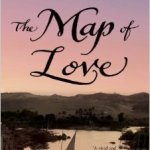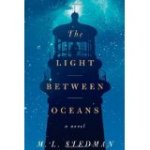Three Good Books
Three books I’ve read recently compelled me to turn their pages rapidly for visits to faraway places:

The Boys in the Boat: Nine Americans and Their Epic Quest for Gold at the 1936 Berlin Olympics by Daniel James Brown. Brown took me to the forests of Washington State, where many members of the University of Washington Crew Team built their muscles as lumberjacks, to Puget Sound, where they developed skill and teamwork, and finally, to rowing competitions in New York and Berlin. The daunting hardships these young men endured during the Great Depression made them resilient and fiercely determined to succeed. Each is so well-described that I soon became an avid fan. I cheered their coaches, too, shrewd judges of character and masterful motivators. Now I have new appreciation for this sport, which I had previously viewed as stiff competition for the time and energy of some of my best piano students. Rowing is a total body workout and the most completely demanding, mentally and physically, of all sports. I’m so proud that my godson Jasper is a rower for the JFK School in Berlin. As we drove to Potsdam last August, his mother, Beatrice, pointed out where he practices, not far from the facilities built for the 1936 Berlin Olympics. The author’s extensive research and vivid portrayal of that event, where Louis Zamperini (Unbroken) and Jesse Owens also competed, gave global significance to the Washington team’s accomplishment. I thank Daniel Brown for completing the story by telling what became of these nine great guys during the rest of the 20th Century.

The Map of Love by Ahdaf Soueif. Ava, a Virginia friend who grew up in the eastern Mediterranean, recommended this engrossing novel. Reading it took me to Egypt–Alexandria, Cairo and Luxor, places I would love to visit someday. It reminded me of the sights, sounds and fragrances that Steve and I experienced when we lived in Istanbul in 1967, and that Lilli and I experienced in our travels to UAE, Oman and Lebanon in 2001. Anna, the central character in The Map of Love, is a young widow who leaves London for Cairo in 1901, seeking change. At first she socializes only with members of the British occupying force, but with a con brio spirit I admired, she soon met native Egyptians and fell in love with the family of Sharif Basha. I was captivated by their two-week journey into Sinai by camel and horse (she was disguised as a French officer to avoid scandal). Their romance under the desert sky was magnificent. But when they married, the Brits dropped her. The British are portrayed as arrogant and deplorably thoughtless, such as staging a fox hunt that ruined Egyptian farmers’ fields, then shooting those who protested. Arab struggles in Palestine appear to have been as intractable in the early 1900s as they are today. The structure of the novel is complex, alternating between accounts of Anna and Layla a century ago and conversations between Isabel (“Isis the beautiful, the first goddess”) and her cousins Omar and Amal in 1997, when the novel was written. I loved the device of reconstructing the life of the remarkable Anna from the contents of an old trunk left to her granddaughter. The author’s exploration of Arabic root words inspires me to study Arabic.
Here is a link to a short, heartwarming story of how one person’s knowledge of Arabic brought peace to the gate area of the Albuquerque airport in 2008. It gives one hope that we have made just a little progress in the century since Anna made her difficult journey through the map of love.

The Light Between Oceans, a first novel by M. L. Stedman, took me to a lighthouse off the coast of western Australia in the 1920s to meet another Isabel and her husband Tom Sherbourne, a survivor of World War I. Isolation, parenthood and the consequences of both war and lying are the chief themes. It’s easy to sympathize with the characters’ choices, but painful to consider the results. This cautionary tale reveals the value of honesty and law, without obvious moralizing. Reading it during Thanksgiving week made me grateful for our family. This book recalled two of my all-time-favorite books set in Australia: The Thorn Birds by Colleen McCullough, which I read in 1978 while nursing Shelby, and A Town Like Alice by Nevil Shute, published in 1950. Both were made into well-done mini-series that are still available on DVD.
Leave a Reply